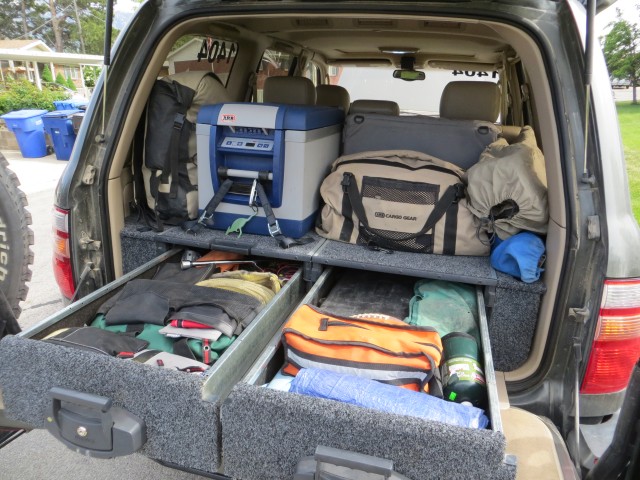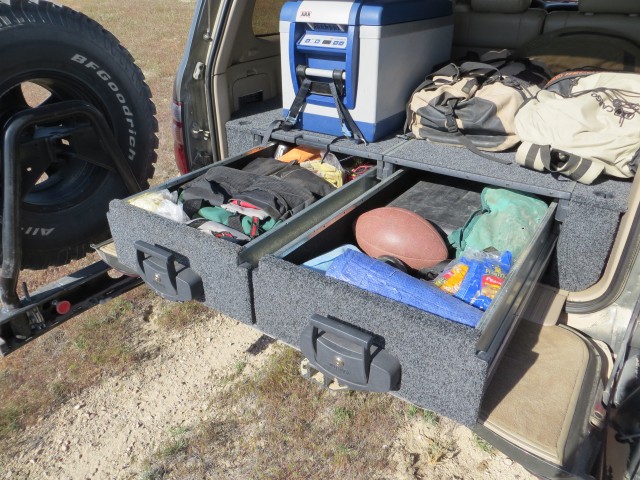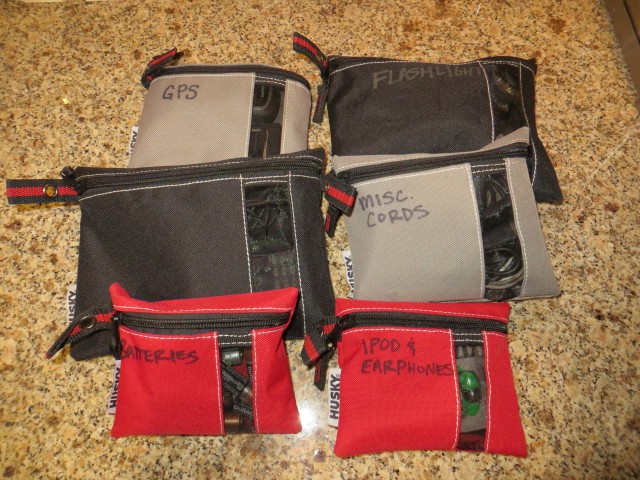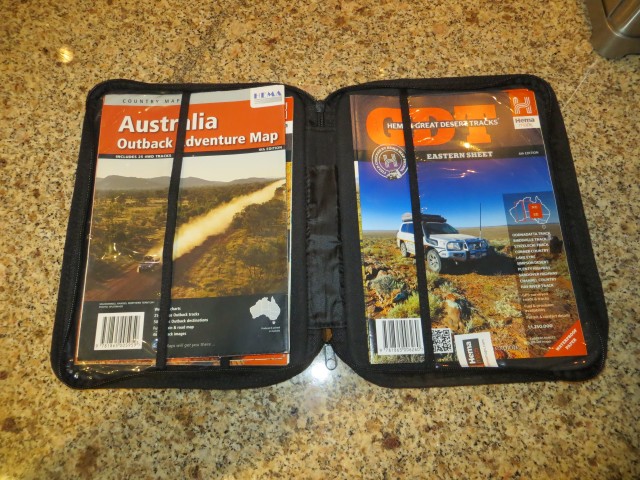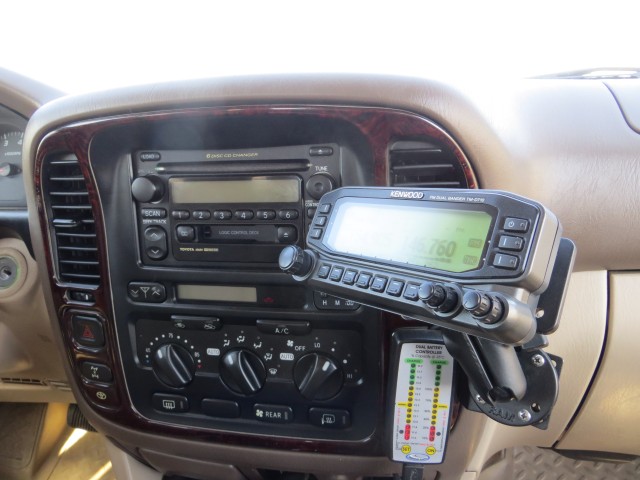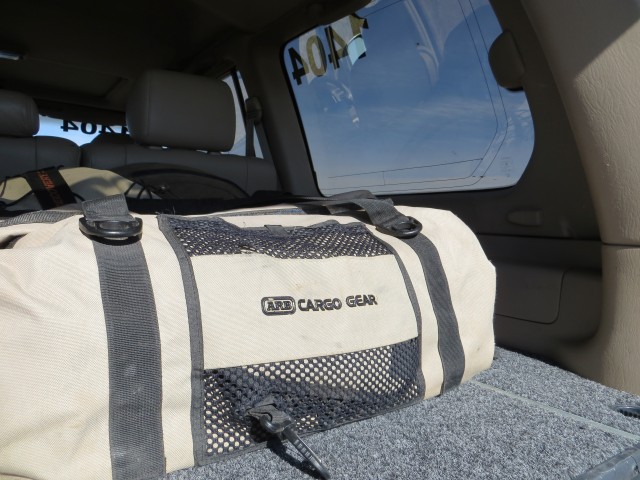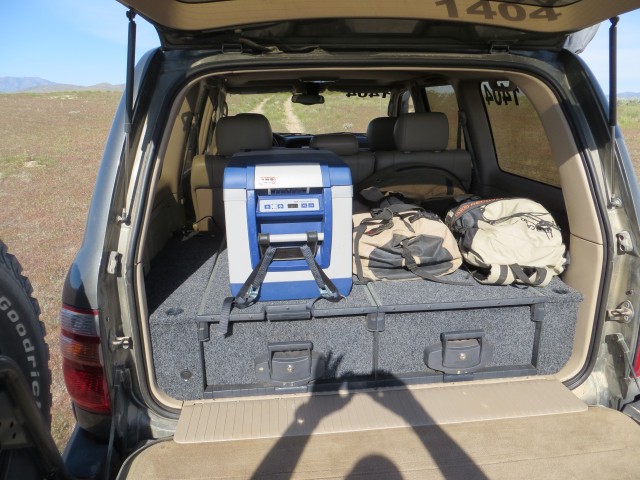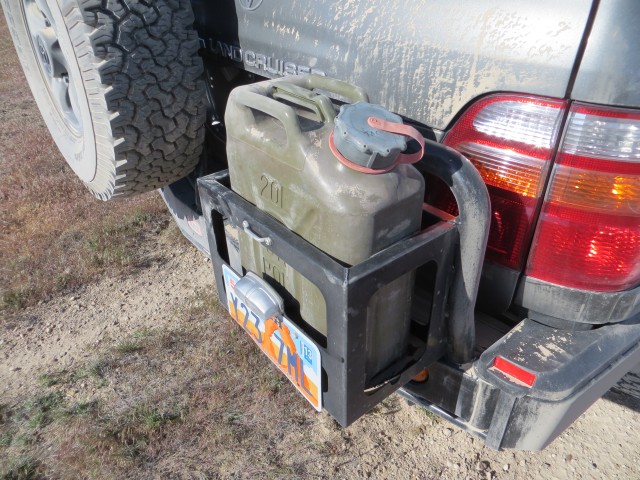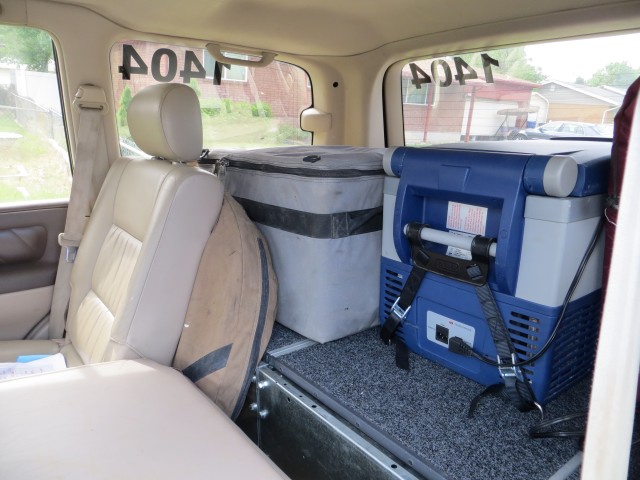Planning out the Pack: Discussing preparation and packing for a week on the trail

Is this your camp setup? (Photo courtesy of Dave Lilligren)
“When preparing to travel, lay out all your clothes and all your money. Then take half the clothes and twice the money” – Susan Heller
This is a little different article for me, rather than focusing on a specific gear item or genre, or focusing on a particular upgrade I’m hoping to highlight the ‘zen of packing’. Particularly some tips, tricks, and ideas to ponder when packing for a week on the trail. Specifically “camp to camp” trips in which you will likely be unloading and repacking each day as your trip has you on the move rather than staying at a single base camp. Packing for a single base camp is more on par with packing for a single night’s camp, albeit a larger quantity of food, water and gear. While this article may be contain some helpful thoughts for base camping it is not within the intended scope. Likewise planning and packing for a trip lasting several weeks or more is different in its own right as well and again some thoughts here might be helpful but far from definitive. I don’t know that anyone could consider themselves an expert on such a loosely defined subject, though I think with time and practice you get the point where you have mastered your personal packing needs and find that you feel ‘expertly’ prepared to head out on a trip knowing you have not left stuff behind. In some of my other gear articles such as my Roof-Top-Tent overview and 12V Fridge overview, I’ve tried to emphasize that neither will get you out in the wilds more. In other words, while both sound like they make camping more convenient and I personally agree they in fact do for my needs, my experience with customers and users has shown that if you didn’t camp much before a RTT, you’re not going to camp that much more with one. This is where this article really sways from the others, I truly do think that being well packed and more specifically organized packing will make the entire camping experience that much more enjoyable, from the time you start packing in your driveway until the last piece of gear is cleaned and put away when you get home. Furthermore, I think that you may in fact feel more inspired to get out more based on the ease of loading and unloading both at camp and at home when the trip is staging or over. Again, keep in mind that these are my findings and your results could and should vary, hopefully this articles gets the wheels turning in your head if nothing else.
So where to start? The first thing people start asking is “what should I bring”. I’ll admit the question seems a little naive too me but I’m an engineer at heart and much to the lament of my wife I’m a ‘list guy’. So if you’re not above grabbing a piece of paper and a pencil or creating a spreadsheet on your computer, I think you’ll find a building a list is the most efficient way to pack. Again I’m a list guy, I have a list for trips in which I take my Tacoma or 100 Series, a similar albeit different list for my FJ40 and a addendum with spare parts and tools to take for either. Over the top? Absolutely, but I don’t ever drive away from my house wondering what I forgot and I don’t feel like I pack things just because they are there for the taking. My lists are specific to multi-day or quick day trips, each covering the needs I expect to encounter.
Making a list and check it twice:
First, break it down into the basic groups. Don’t get overwhelmed by having a giant a to z list, instead a list of much smaller lists. For example I have a list for things inside the house, and that list is broken down into hygiene/clothing, sleeping gear, food. Then I have a garage list, which consists of tools, spares and recovery gear. Here is a sample:
Sleeping Gear
– Tent
– Ground Cover
– Sleeping Bag(s)
– Pillow(s)
– Cot(s)
– Air Mattress/Sleeping Pad(s)
Personal Gear
– Clothing
— (list your specific needs here i.e. outerwear, shirts, pants, socks, boots, hats, etc)
– Rain Gear
– Hygiene & Toiletries
— (list your specific needs here i.e. toothbrush/paste, soaps, shampoo, towel, toilet paper, etc)
– Medicines/First Aid
– Bug Spray, Sun Block, Chapstick, Sunglasses & Hat
Cooking & Food Prep
– Table
– Utensils
– Plates, Cups & Bowls
– Pots & Pans
– Stove & Fuel
– Cleaning Supplies
Food & Drink
– Perishable
– Dry foods
– Water
– Beverages
– Cooler
General Camp Gear
– Camp Chairs
– Camp Table
– Lantern & Fuel
– Flashlight & Batteries
– GPS Unit
– Communication equipment
– Garbage Bags
– First Aid Kit
– Maps & Guidebooks
Tools
– Plan for not only basic tools but specialty tools required for your specific vehicle.
– Hand tools
– Welder
– Vehicle Jack
Vehicle Spares and Maintenance
– Plan for realistic spares that match the trip your planning
Recovery Gear
– Recovery/Snatch Strap
– Winch tools winch equipped
— Winch Controller
— Tree Strap
— Snatch Block
— D-Ring(s)
— Winch extension strap (non-elastic, 30+ feet)
— Winch Anchor
– Lifting Device (Hi-Lift, Exhaust Jack, Floor Jack, etc)
Comfort/Entertainment/Safety
– First Aid Kit
– Camp Chair
– Shower
– Guns/Ammo
– Books & Games
– Camera
Pets
– Dog Food
– Water/Food Bowls
– Toys/Bones
Activity Specific
– Hiking Gear
– Fishing Gear
– Hunting Gear
– Climbing Gear
– Caving Gear
While that may look like an overly detailed list from first glance, I can assure you its 1/4 the size of my standard packing list and while I’ll concede my list is too detailed, it does serve to prevent me forgetting something. For example when it comes to clothes I have line items for a work shirt and a pair of work pants, sandals and hiking boots, hat and beanie, undershirts and long-sleeve shirts, etc. I have a recommended quantity for the number of days I’ll be out, i.e. socks are 1 per day, so if my trip is 7 days I take 7 pairs of socks. Now my wife will tell you I don’t change my socks that often but I’d rather have a couple of spares and I really do try and put a fresh pair of socks on each night before bed, particularly when it is cold out. If your children will be joining you, add line items for them too. Don’t forget about your pets either. Take this list and modify and expand it for your own uses or utilize one of the many other lists available as well, I’ve added some list links at the bottom of this article. Please post any others you find and are willing to share.
Packing Considerations:
What will you use first when you arrive to camp? Will your tent be on the bottom? Will your recovery tools and tools be accessible without outright tear down of your packing? How about lunch or snacks along the trail or en route to camp? Are they easily reached or buried underneath your camp stove, sleeping bags and firewood? I think with each trip you’ll find better ways to accommodate the priorities of packing and maybe that means breaking things up a bit. I utilize my console and glove box as much as possible for things I might need in a hurry, a flashlight to aid in changing a flat tire alongside the trail, or a first aid kit to source a band-aid for a scuffed knee. In my latest vehicle build I added a pair of drawers to the rear of the vehicle. It’s amazing how much efficiency these add to your packing. On one drawer I can store all of my tools, spares, recovery gear and have some leftover room for dry food, canned goods, water bottles, etc. In the second drawer I keep all my personal camping gear, sleeping bag, pad, tent, pillow, overnight bag and even my clothes for warm weather camping. This leaves nothing in the cargo area except the fridge (securely mounted), my Kamp Kitchn chuck box and the gear of my wife or any guest traveling along. Along the lines of packing is making sure your gear is safe and secure? Safety is a no brainer, are their items in your cab that can and will become projectiles in the event of a rollover or accident? Make sure heavy items are lashed down.
A weeks worth of gear loaded and ready for departure – Photo by author
Aides in Organization:
Utilize the storage elements your vehicle has built in. For example your glove box, often they are completely filled with a mess of useless array of leftover napkins and random papers. Why not use that space for something task specific. Like a small first aid kit, your flashlight or headlamp. What about the space under seats, in your center console, in side panel storage bins in the cargo area. Find items that fit neatly into those areas and give them a permanent home. Try and be systematic about your needs, i.e. your camera shouldn’t be stored in the rear cargo side panel bin next to the factory jack, but spare parts could be. A liter of oil shouldn’t be in your center console but your GPS could when not in use.
Drawers are a fabulous way to condense and organize gear – Photo by author
Organize with bags, boxes, and bins. I’m a big fan of keeping like items in their own storage devices. For example, I keep all of my cords in a ‘cord bag’, spare batteries in a ‘battery bag’, 2M HAM radio and 12V USB and phone cords in the ‘HAM bag’, you get the point. I tend to find myself using a ham radio on the go so having it in my bag in an easy spot is so important! There are varieties of bag options at your sporting good stores such as Kirkhams or Recreation Outlet, I’ve also found some Husky branded bags I really like at Home Depot. These bags help keep your glove box, console and tool bag organized. And that organization will lead to a better experience or at least less time spent digging around your vehicle. Move beyond that, build a chuck box to stow all of your cooking gear, designate a bin for all of your recovery gear in one convenient and consistent location. Optimize.
An assortment of different gear bags, easy to label and identify, easy to store in glove box, door pockets, etc. – Photo by author
Map case for organizing maps, agendas, trail guides, etc. – Photo by author
Food & Beverage Prep & Storage:
Plan out a menu for your trip, as you plan the menu build a shopping list of needed items. As you work through the menu, try and choose meals that can utilize the ingredients you are already packing along. You can save tremendous amounts of room by preparing as much of the meal before you leave, i.e. bring a sealed container of pre-scrambled eggs rather than a bulky container of eggs. Carry water in a bulk container such as a 5 gallon jerry-can style water container and re-fill a water bottle or a handful of water bottles throughout the day. This saves room in your fridge and a 5 gallon container is far more space efficient than a case of water bottles, plus it produces less waste too. For those with 12V fridge systems you can reload beverages into your fridge as they are needed, thus saving important space in the fridge for things that must stay cold. For those with coolers, consider the use of dry ice to prolong the life of your ice. You can also freeze bottles of water to help keep things cool and serve as nice drinking water when they thaw. If your travels will have you visiting sites or cities with grocery stores or markets with known quality food, consider reducing your initial packing and plan a visit. You can not only save space in the vehicle but you can maintain fresh food and some local flavor. For example I recently spent a month traveling roughly 5,000 miles through Siberia (Russia), our team never packed more than 3-4 days worth of meals at any given time. We did have some MRE backup meals in cases we got into a precarious situation but we just planned to reload in the towns along the route, a welcome cultural exchange. Don’t think you have to leave the house with 100% of your goods particularly for local travel, you’re often in town for fuel stops anyway.
Set It And Forget It:
Mounted gear is hard to accidentally leave behind, simple as that. Things like compressors, CB radios, shower systems, shovels, axes and water containers are easy to pack and unpack, but they are one more thing to have to find a suitable location for. In most cases, hard mounting those items will free up room and will further optimize your organization. Utilize a bumper with swing-outs or a roof rack for semi-permanent mounting. But go beyond that and duplicate the items you need for camping and leave them in the vehicle. Items like flashlights, first-aid kits, recovery gear, etc are all handy in other vehicles or around the house, but leaving them packed not only ensures they are there for the next trip and safely stowed where you know they belong.
Dash mounted 2M ham radio unit and dual battery controller/monitor. Less things to pack along each trip – Photo by author
Gear Selection:
I’ll use this as an excellent segue for discussing the quality of gear you pack. Like many things in life, camping gear and tools often fall true under the mantra “you get what you pay for” or the more recent “buy once, cry once”. This is particularly true in situations in which your gear is getting taxed. Choose gear and equipment to match your lifestyle and usage. If you’re going to sleep in a tent a couple of times a summer you can get by with a $50 chain store variety dome tent. However if you plan to set up that tent day in and day out for several weeks a year, some true winter camping and some nasty windstorms, the $50 is going to leave you out in the cold (pun intended). Don’t think you have to spend 5x as much to get gear that is 5x better, in fact that often isn’t the case. Shop around, consider well cared for used gear, watch for sales and you can find that by spending a little more up from you end up with a camp stove your kids will fight over when you die. Consider your duffel bags too, I’m a big fan of stuff-sacks and compression style bags not only for sleeping bags and camp pillows but also for my gear. In particular I use ARB’s Cargo bags, they are water-proof and allow you to really cinch the bag down, saving much needed space. On top of that they are waterproof, I can pack them in the bed of the truck or on a roof rack if needs be without worry that my pillow or sleeping bag will emerge as a saturated sponge. I’m not a fan of the wrap your gear in garbage bags and strap it on the roof. Something about a garbage bag sail flapping in the wind doesn’t lend me much confidence that one’s gear is going to stay dry and dust free over a long weekend in the desert. Another practical option is the many plastic storage containers on the market, from the budget minded $20 Action Packers to mil-spec Pelican and Hardig containers that can easily be several hundred dollars. Play a little ‘packing Tetris’ in the back of your vehicle with your gear, I’ll be you’ll find some storage boxes that will really help keep things organized and less of a haphazard pile of gear.
On the subject of bags, choose a bag that will have enough room for all of your sleeping gear or all of your clothing gear. For example the ARB cargo bag shown in the picture below contains a pair of sleeping bags, mattresses and camp pillow’s, basically enough gear for my wife and I. Even when we unload the truck we leave the bag loaded and ready for a quick load into the next vehicle. In the past we would unpack the bag and toss everything back on a shelf in the basement, that works but the cost of the bag is well worth the convenience and time savings knowing all of the gear is in one place and ready to go. I do the same thing with my chuck-box kitchen setup, all of my stove and cooking gear (even a small amount of food) are stored in a single case, load the one case and I’m good to go. This of course assumes you clean your gear and restock it when you get home which segues into the next segment.
ARB Cargo Bags, waterproof for use in the bed of a truck or on the roof rack – Photo by author
The Unpack & Gear Maintenance:
Just like your 4×4, your camp gear needs some attention, don’t forget about your gear once you get home. I know you’re so excited to upload your photos and share them with your closest friends on 10 different forums and Facebook, but post-trip gear reconciliation is as important as packing. Was something not working 100%, were there any zippers or buttons that needed repair? Was your stove burning clean and your lantern sans leaks? Tent stakes all accounted for? I personally often spend more time unpacking the gear when I get home than I do actually loading. Pull your gear out, inspect it for damage, wear, clean it and repair if needed. I wash out my fridge and coolers with some disinfectant, wipe down the stove and repack paper towels, condiments, etc. Put gear away ready to be used not ready to be cleaned, a subtle but important difference. I like to wipe down the inside of my cooler and stove with a light bleach disinfectant. The light bleach keeps them smelling fresh and prevents mildew and mold building up where you least likely want it, near your food. Sleeping bags can be a chore to launder as most household laundry machines are not up to the task, however keep in mind that most dry cleaning shops often do sleeping bags. Prices obviously vary but I’ve had mine done for $10 and it comes back smelling fresh and clean, inviting me to snuggle up with it. While I don’t have the bag laundered every trip, I like to have it done a couple of times a year depending on how it has been used. Particularly with your sleeping bag but a word of caution with all of your gear, follow the manufactures recommendations for cleaning and storage. By combining quality gear and regular upkeep, your gear can last for many years, thus taking some of the sting out of of the price tag.
Related Links & Further Reading:
Overlanding Meets Physics by Jonathan Hanson (Overland Journal, Spring 2007)
http://www.4x4web.com.au/skips4x4/articles/checklist.htm
FrontRunner Overland Adventure Check List
More Pics:
Standard load for a 2-3 day trip for two people – Photo by author
External gear/cargo mounting, eliminate the need for clutter inside – Photo by author
View from the passenger seating area, no clutter – Photo by author

